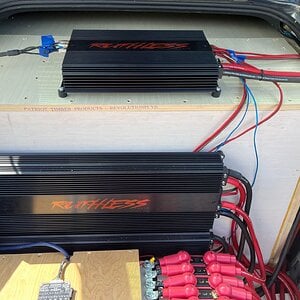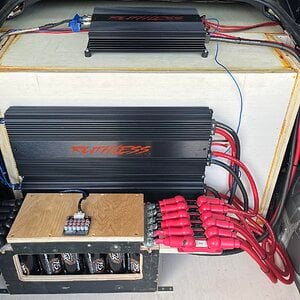‘Power supply input and output impedance are used to verify the supply’s stability and dynamic performance when subjected to various loads.‘
‘The output voltage of the supply at no load will remain constant until a load is connected and the current starts flowing. The voltage drop at the output is dependent on the output current as well as the output impedance. This impedance is often affected by the components at the output regulator and filter stage of the power supply, and largely influenced by the capacitors and inductors.’
‘However, the output impedance is a factor of the feedback loop and the regulated power supply works more or less like an amplifier with feedback. And the same principles that apply to the feedback design in amplifiers are similar to that in the regulated power supply. The effectiveness of power supply regulation is dependent on the magnitude and frequency variations in the load, and the low impedance helps maintain a stable output regardless of these changes.’
The output impedance is the ratio of change in output voltage to change in load current. Click here to learn more

www.sunpower-uk.com
^^^This was my point with half bridge vs full bridge power supply, and their relative places of components within the circuit, with how full bridge loads are “surrounded” by the mosfets. The stress on the mosfets is going to change differently between the two types of amps, due to the nature of the circuit during high stress situations (looking at this from a “I want maximum bass music” perspective):
^^^Those “loops” have inherently different up and downsides, it seems. Seems like the half bridge power supply might help control fluctuations better, if the power supply can handle the current changes better than the mosfets can.
‘The effectiveness of power supply regulation is dependent on the magnitude and frequency variations in the load, and the low impedance helps maintain a stable output regardless of these changes.‘
Low impedance helps maintain a stable output, I guess, to an extent. That’s why it seems, to me, again IMO, that the low output independence helps dampen the electrical changes from sub-load.
So, if situations arise where the sub’s movement becomes too much stress on the amp, then it seems like a low impedance output would have a higher capacity to absorb or dampen serious electrical fluctuations. Lower output impedance may indicate an amp’s higher ability to handle wild electrical changes from the movement of the load. If you have voltage drops in your 12v and an amperage increase along the board + your sub unloads, that might = a higher chance of circuit protect from the inability to dampen those major electrical swings. Like trying to push/pull too much current through the amp, causing instability, because it seems that the frequencies being played can have quite different stresses on the amp, overall.


